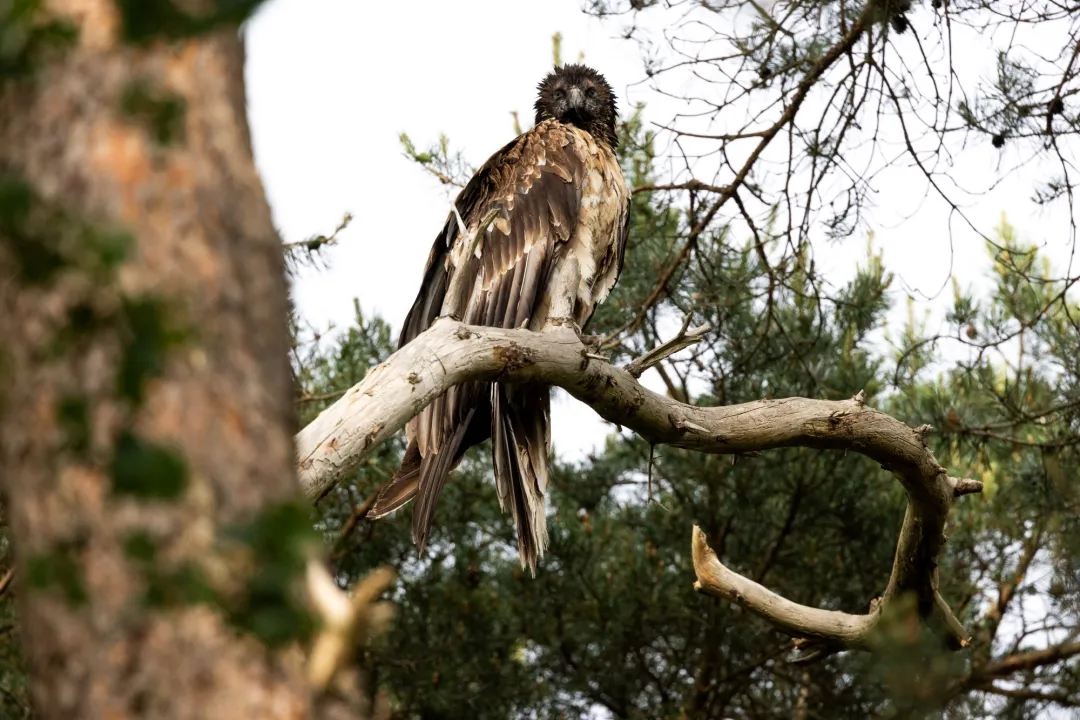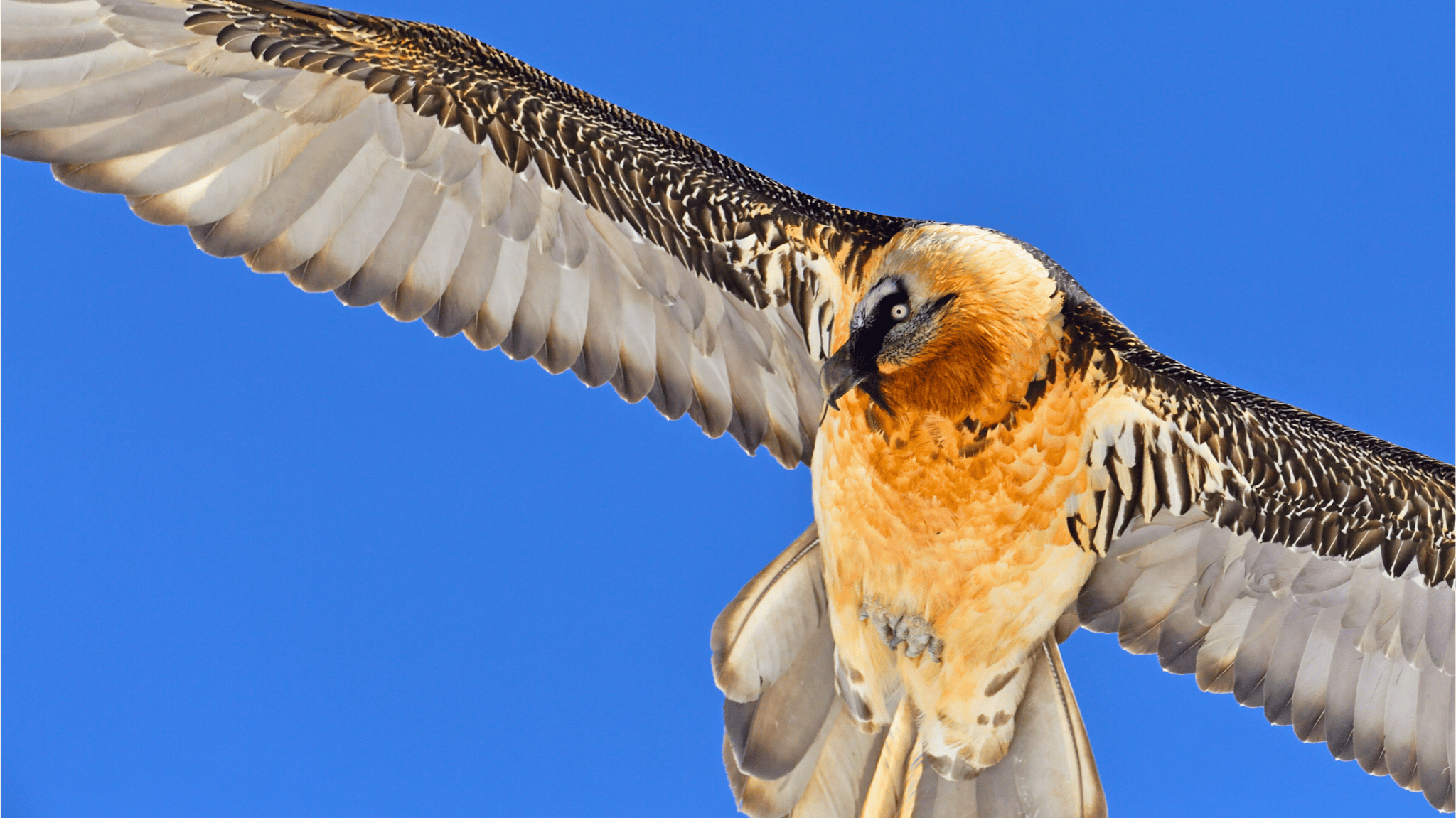
The first Bearded Vulture egg of the new captive breeding season has arrived! A rather productive pair in Austria is responsible for this exciting development that kicked off the egg-laying period to an early start.
The Bearded Vulture captive breeding season begins
Perhaps one of the most diligent and caring parents of the animal kingdom, Bearded Vultures perform several parental duties for many months in order to welcome and rear their offspring. During this time of year, the around 40 breeding pairs out of the 174 captive birds that are housed in the Bearded Vulture Captive Breeding Network get busy. Staff will see breeding pairs play with nesting materials such as sticks and wool, construct their nest, engage in mutual preening, exhibit aggression towards neighbouring pairs and start copulating. Egg-laying typically occurs three months after nest building and anywhere between 50 and 90 days after copulations. Once they lay the egg, the pair shares responsibilities and incubates the clutch for around 54 days, and the hatchling will usually be able to fledge at approximately four months of age.
The first clutch of the new breeding season arrives in Austria

Nest camera photo © RFZ 
The male BG108 © RFZ
As coordinators of the network, our colleague and friend Hans Frey, one of the Bearded Vulture captive breeding pioneers on the VCF’s Advisory Board, informed us of the pleasant news. The pair BG108 and BG175 laid their first egg on 28 November 2021 at Richard Faust Bearded Vulture Specialised Captive Breeding Centre in Austria (RFZ), which hosts most Bearded Vulture individuals in captivity. The male BG108 hatched on 6 February 1989 in Haringsee and is of Cretan descent (3 offspring from his father in the network), while the female BG175 hatched on 1 April 1992 at Tierpark Berlin and is of Asian descent. These two vultures have greatly contributed to reintroduction and restocking efforts. They have been a pair since 2001, and have successfully produced a clutch almost every year – the first in 2002. Not to mention that they hatched a total of 26 chicks!
Let’s hope the egg is fertile and will hatch. Here’s to another fruitful breeding season!
Breeding Bearded Vultures for conservation purposes
Back in 1978, the Vulture Conservation Foundation (VCF) and partners united to bring the Bearded Vulture back to the Alps. To achieve this goal, pioneers established a captive-breeding programme to produce chicks and release them into the wild, with the first release taking place in 1986 at the Austrian Hohe Tauern National Park. It took time and perseverance since Bearded Vultures only reproduce when they reach around 7-10 years old, with one chick surviving per year. Still, thanks to these efforts, the species returned to the Alps, making it one of the best wildlife comeback stories of all time! Ever since this success, more projects were launched across France and Spain. Today, the Bearded Vulture Captive Breeding Network, coordinated by the VCF on behalf of EAZA‘s EEP, closely works with over 40 partners, including zoos, to ensure the best breeding results from the potential breeding pairs in captivity. Every year, the VCF and partners release young captive-bred Bearded Vultures into the wild across Europe to reintroduce the species to areas where it went extinct or boost local, vulnerable populations. Up until the end of 2021, a total of 344 captive-bred Bearded Vultures were freed into the wild.
To follow the news of the breeding season, follow #BeardedVultureBreedingSeason on Facebook, Twitter, Instagram and LinkedIn.







